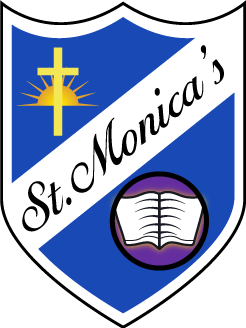Geography
Geography at St. Monica's
“Geography explains the past, illuminates the present and prepares us for the future. What could be more important than that?” Michael Palin
At St Monica’s Primary School we believe that it has never been more important for children to have a comprehensive global understanding and knowledge of the world and the people and cultures that inhabit it. Through understanding geography and the complexity of our planet, we believe that our children will develop respect for the physical environment and the diverse range of cultures and beliefs that make up our world. Our children will be self-aware of the impact they can have on our planet. Our Geography curriculum allows children to build resilience and become problem solvers. We want our children to be inquisitive about the world, open-minded and also responsible for the actions and choices they make.
We are committed to providing a teaching environment which ensures all children are provided with the same learning opportunities regardless of social class, gender, culture, race, special educational need or disability. Teachers use a range of strategies to ensure inclusion and also to maintain a positive ethos where children demonstrate positive attitudes towards others. Support for specific individuals is well considered and planned for, to ensure that tasks provide learners with an appropriate level of challenge.
Intent
At St. Monica’s Catholic Primary School, we will provide high quality Geography teaching that inspires in pupils a curiosity, and a fascination about the world around them and its people, that will remain with them for the rest of their lives.
At St Monica’s Catholic Primary School, our approach to teaching geography is to:
- Stimulate the children’s interest and understanding about the world and its people and that will remain with them for the rest of their lives.
- Develop their knowledge about diverse places, people and resources and natural and human environments and an understanding of the earth’s physical and human processes.
- To equip them with the geographical knowledge and skills that explain how the Earth’s features are shaped, interconnected and change over time.
Aims
We enrich children’s learning in the following ways:
- Develop contextual knowledge of the location of globally significant places-both terrestrial and marine – including their defining physical and human characteristics and how these provide a geographical context for understanding the actions of processes
- Understand the processes that give rise to key physical and human geographical features of the world and how they bring spatial changes over time
- Are competent in the geographical skills to:
Collect, analyse and communicate with a range of data gathered through experiences of fieldwork that deepen their understanding of geographical processes
Interpret a range of sources of geographical information, including maps, diagrams, globes, aerial photographs and Geographical Information systems
Communicate geographical information in a variety of ways, including through maps, numerical and quantitative skills
Implementation
To ensure high standards of teaching and learning in geography is progressive throughout the whole school, St Monica’s have appointed a coordinator for each key stage. Planning for geography is a process in which all teachers are involved to ensure that the school gives full coverage of the National Curriculum programmes of study for Geography 2014. As part of their planning process, coordinators and teachers ensure that:
- Staff meeting time is allocated throughout the year to ensure that teachers have the knowledge and skills necessary to implement the curriculum.
- There is an investment in trips and outside experts to create a meaningful context for learning.
- High quality resources and texts are used to support the children’s learning and are regularly reviewed.
- Teachers ensure that the curriculum is ambitious but inclusive to all pupils and demonstrates that British Values are addressed.
- Meaningful cross-curricular links are developed to deepen children’s understanding.
- Projects to create links between school and home.
Impact
The geography curriculum at St Monica’s Catholic Primary School inspires in pupils a curiosity and fascination about the world and its people that will remain with them for the rest of their lives. Teaching equips pupils with knowledge about diverse places, people, resources and natural and human environments, together with a deep understanding of the Earth’s key physical and human resources. As pupils progress, their growing knowledge about the world helps them to deepen their interaction between physical and human processes, and of the formation and use of landscapes and environments. Geographical knowledge, understanding and skills provide the frameworks and approaches that explain how the Earth’s features at different scales are shaped, interconnected and change over time.
Progress through the geography curriculum is measured through a mixture of formative and summative assessment, regular book moderation, celebration events and discussion and review with the children. Feedback is continually given to children which leads to better outcomes. Links will be established between school and home celebrating curious and engaged children. At the end of each topic the children will debate an issue and complete an end of topic quiz. This will enable us to determine if children have a secure understanding of geographical concepts taught as they move forward to their next stage of education. “As practitioners we should be aiming to move all our children into becoming teachers. If a child can confidently demonstrate the level of understanding necessary for them to be able to explain and teach a concept, idea or approach to another child, then in doing so they are demonstrating that their initial learning has been internalised and embedded.” (The School Improvement Company, 2019)
Pupils develop a secure understanding of each key block of knowledge and concepts, meaning that they can progress successfully to the next stage in their learning.
